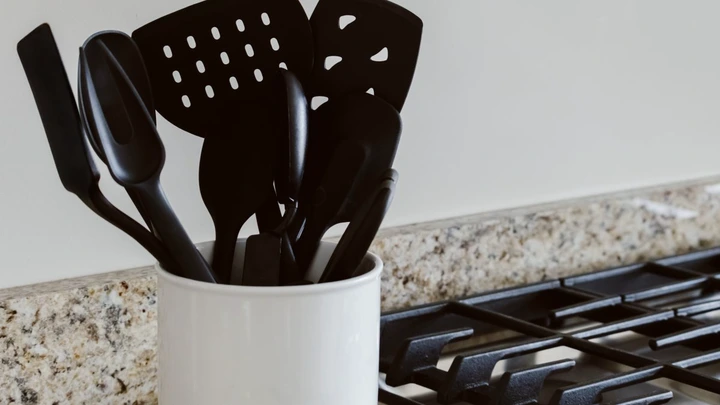Is it time to dispose of your black plastic cooking utensils? Experts offer their insights.
"When selecting cooking utensils, the rule is simple: the more natural the materials, the higher the quality."

View pictures in App save up to 80% data.
If you've been active on TikTok in recent months, you've probably seen a buzzy video or two surrounding the black plastic cooking utensils controversy. A recent study suggested that black-colored plastic kitchen tools are made from recycled electronic materials that may contain harmful flame retardants.
It was later revealed that researchers miscalculated their initial findings, well overstating the actual risk of toxicity. However, according to Google Trends, the search for "nontoxic cooking utensils" is still on the rise.
Tsvetomira Vacheva, who serves as a brand manager for Woodenhouse Lifelong Quality, a company specializing in wooden utensils, shared with Shop TODAY that "there is a growing consumer awareness not just about healthier food options, but also about the importance of using nontoxic and natural alternatives for items that interact with food."
"When it comes to cooking utensils, the principle is straightforward: the more natural, the better," continues Vacheva.
Together with Vacheva and Danielle Walsh, a representative from Anyday's cookware brand, we had a discussion with Dr. Joe Zagorski, a toxicologist and assistant professor at Michigan State University's Center for Research on Ingredient Safety. He elaborated on the research outcomes and suggested safer alternative materials for cooking utensils.
Are black cooking utensils harmful to health?
If you've relied on black plastic cooking utensils in your kitchen for many years, there's no need to panic.
Wellness
As we discussed earlier, the initial research conducted by scientists regarding these possibly dangerous cooking utensils contained a mathematical mistake. This mistake inaccurately reported the safety threshold for BDE-209 (a flame retardant) exposure for an adult weighing 132 pounds, claiming it was 42,000 nanograms per day instead of the correct figure of 420,000 nanograms per day.
According to the study, an exposure of about 34,700 nanograms per day was present from utensils tested, which came uncomfortably close to the limit that was originally stated.
On December 15, Chemosphere issued an update acknowledging a correction that slightly tempered their findings. The update reassured readers that despite this adjustment, the main conclusion of the study remained unchanged: the recycled plastic kitchen utensils examined were confirmed to contain flame retardants.
If you're worried about plastic or the risk of contamination it may pose, Zagorski recommends exploring other materials like wood or metal. He advises, “To guarantee safety and longevity, choose reputable brands that specialize in creating products meant for high-temperature settings.”
"When discussing toxicity, it’s essential to consider it alongside the environmental impact of our consumer choices," adds Vacheva. "Factors such as biodegradability, the potential release of toxins during disposal, and damage to marine ecosystems should always be taken into account. We are part of a connected ecosystem, and even if the effects are not immediately visible or direct, they remain significant and impactful," she notes.